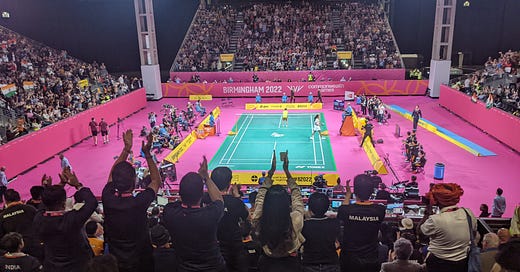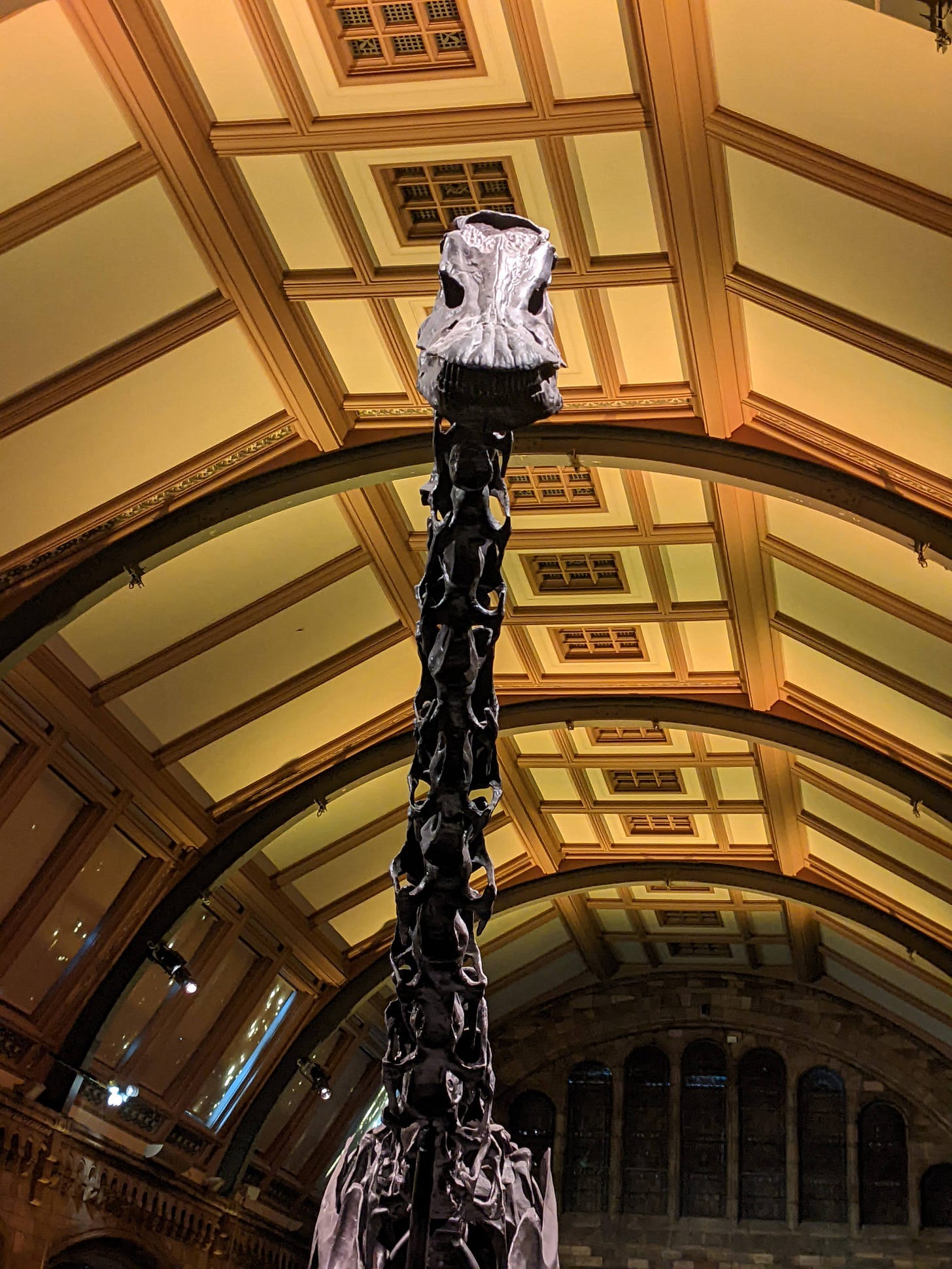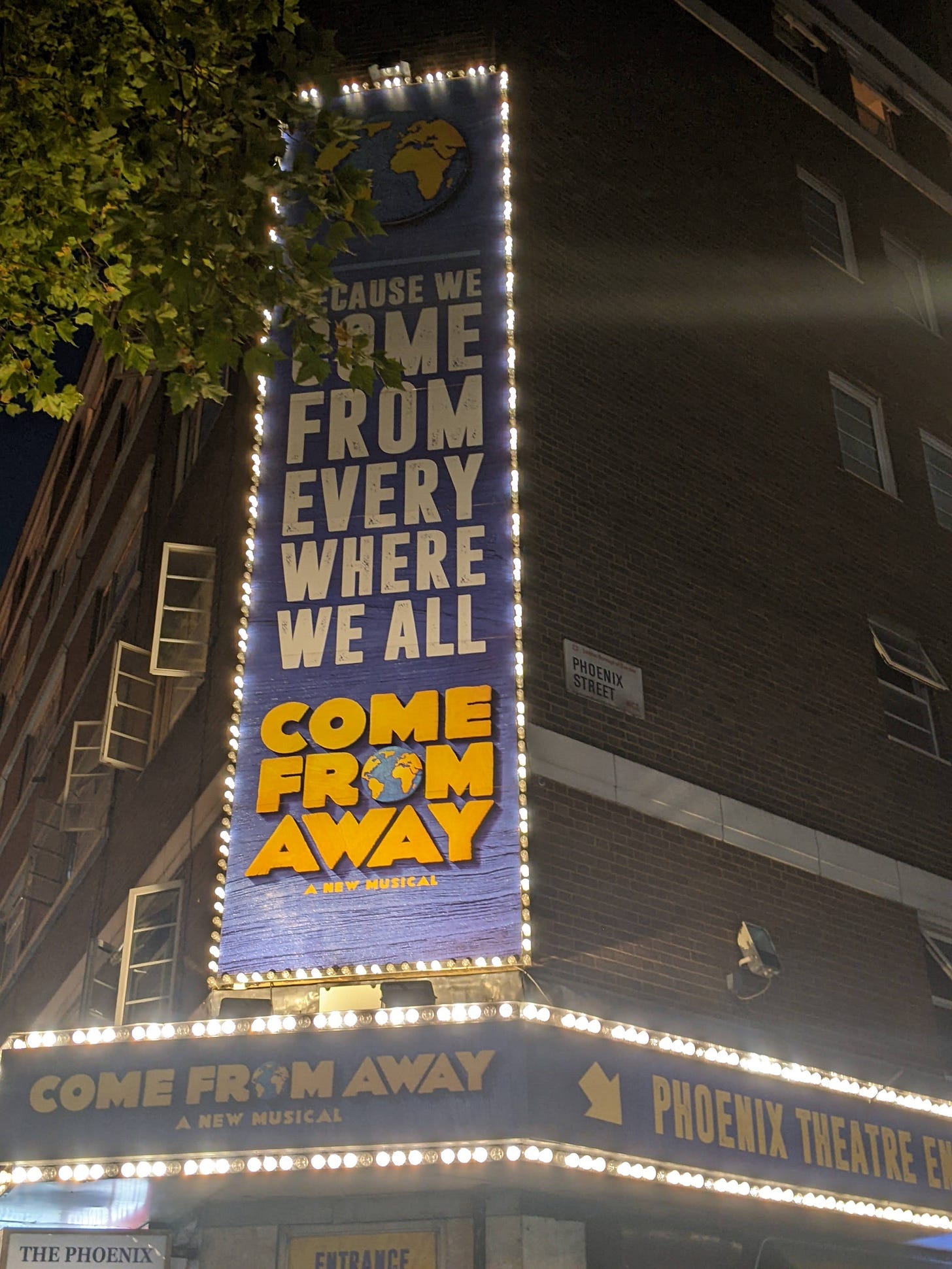#20: Commonwealth Games Diary 4: Games Overview
Singing wrestlers, ice cool athletes from Ranchi, and a musical in London.
How does one condense 12 days of sport into one post? It’s hard, probably impossible, so let me instead tell you about what I saw, as I tried to take in the full Commonwealth Games experience. I saw teenagers, even an Indian 14 year-old impress, and a 72 year old take home a medal. I saw a very old new sport arrive, as cricket returned. I saw that not all medals are equal. Some golds are easier than others (Mirabai), some silvers more valuable than golds (Sable), and some bronzes are statements large as statues (Tejaswin). I even saw a fourth place I never saw coming (England women’s cricket team).
Trying to take in everything the Commonwealth Games had to offer meant using the days that I wasn’t working on cricket to watch other sports. My favourite such digression was a trip to Royal Leamington Spa (pronounced Lemmington, don’t ask me why, and there’s no longer a spa there, don’t ask me why) for lawn bowls. The venue and setting was as English as it gets: a charming little town, favoured by a queen and so decreed to be ‘Royal’. But in this most English of environments, I got to watch the Indian women’s team make history. Gold was brought home by a group of women who would’ve looked at home in a building kitty party. Rupa Rani Tirkey and her team showed that we need to redefine the body types we think of when we say ‘athletes’.
But my favourite part about the sport has to be how much every athlete talked to the bowl after it had left the hand. So much energy spent on something that everyone agrees makes no difference whatsoever.
One station north from Leamington Spa is the National Exhibition Centre, which housed the badminton. That is, when the Malaysian fans were not bringing the house down. I was there watching the team finals, where we lost to Malaysia. We were outnumbered and out chanted by the Malay fans, whose habit of shouting ‘yeah’ at every smash their players land creates a cascade of sound bearing down on the opponent, along with a very fast shuttle. It’s something I saw Indonesian fans doing at the famous Istora Senayan stadium in Jakarta, during the 2018 Asian Games.
In between points, the Malays would break into song, singing an indecipherable anthem that stretched across points. Meanwhile, all we could reply with was chants of ‘India, India’ and ‘jeetega bhai jeetega’. We really need to get a bit imaginative with our chants. Badminton needs it’s own North Stand Gang. Or maybe we should recruit the Nigerian wrestler Odunayo Adekuoroye, famous for singing on the mat. Adekuoroye beat Anshu Malik to deny India a sweep of golds at Birmingham, and I was amazed to see her burst into song the second she finished her bout, and singing songs of praise to God on the podium as well.
My struggle with badminton is that I cannot read the game. I find it hard to spot patterns. If a player wins a string of points, it’s hard for me to tell why, despite playing badminton regularly (recreationally). Netball on the other hand, I could read, despite watching it for the first time. I could tell where the ball was going to go, based on which player on the court was open. Curious, how that works. Are some sports just harder to figure out than others, more subtle, more complex, even when they look simple? Does this happen to you?
My favourite insight during netball came from a badminton person: The lady sitting next to me had just run over from the badminton hall where she works as a producer, and proffered this wisdom: “In netball you can’t win with a superstar. You need everyone to be good because no one player is allowed to move into more than two thirds of the court.”
On the way to netball, I met a gent named Liam. When I asked him if he’d been to India, he said yes. Guwahati it seems. ‘That’s oddly specific, and very non-touristy,’ I thought to myself. Apparently, he’s a boxing coach who’s worked there with Mary Kom. This is what I love about multi-sport events, you never know who you might be sitting next to in an arena.
I have a few days in London before I depart, and I spend them soaking up as much culture as I can. I visit the V&A museum, where artefacts voluntarily given sit alongside ones that were involuntarily taken from colonies. The place reminds me how little I know of our species’ complicated histories. I visit my favourite museum, the Natural History Museum and it makes me feel wonder, especially the exhibition named Broken Planet. It features a number of museum scientists and how their work is trying to solve the problems we face. One is hoping to replace cattle feed with seaweed, freeing up the vast land area currently used to grow it. How cool are these people? I want to be them when I grow up.
I go to South Bank, along the Thames, and take in some live music and dancing lessons, given by the cast of a musical that's playing at the nearby National Theatre. All of the above activities were free, and shouldn't have been, they were all such value packed experiences. It drove home how public money can and should be used.
On my last night in London, I attended my first musical at a theatre in the West End. Come From Away is a lovely adaptation of a true story: how the Canadian border island of Gander handled the influx of 6000+ people, after 38 planes carrying various nationalities were ordered to land there in the aftermath of 9/11. Come From Away swept me up with its lovely depictions of how extreme fear and kindness often coexist. Before Covid, 9/11 was probably the biggest event that shaped our world, and it was interesting to revisit it through this show and see how similar human reactions to tragedies tend to be, irrespective of race, class and religion. If there is one underlying thread that travel and sport teaches me, it is that the world is an unequal place filled with people who are all the same.








